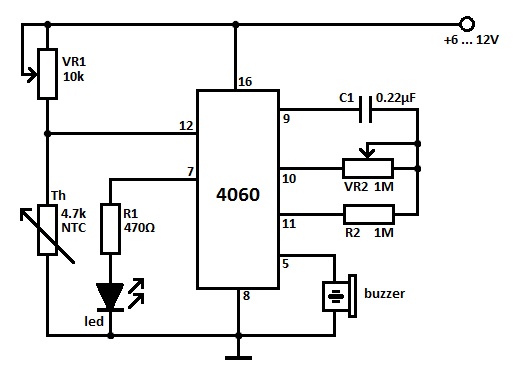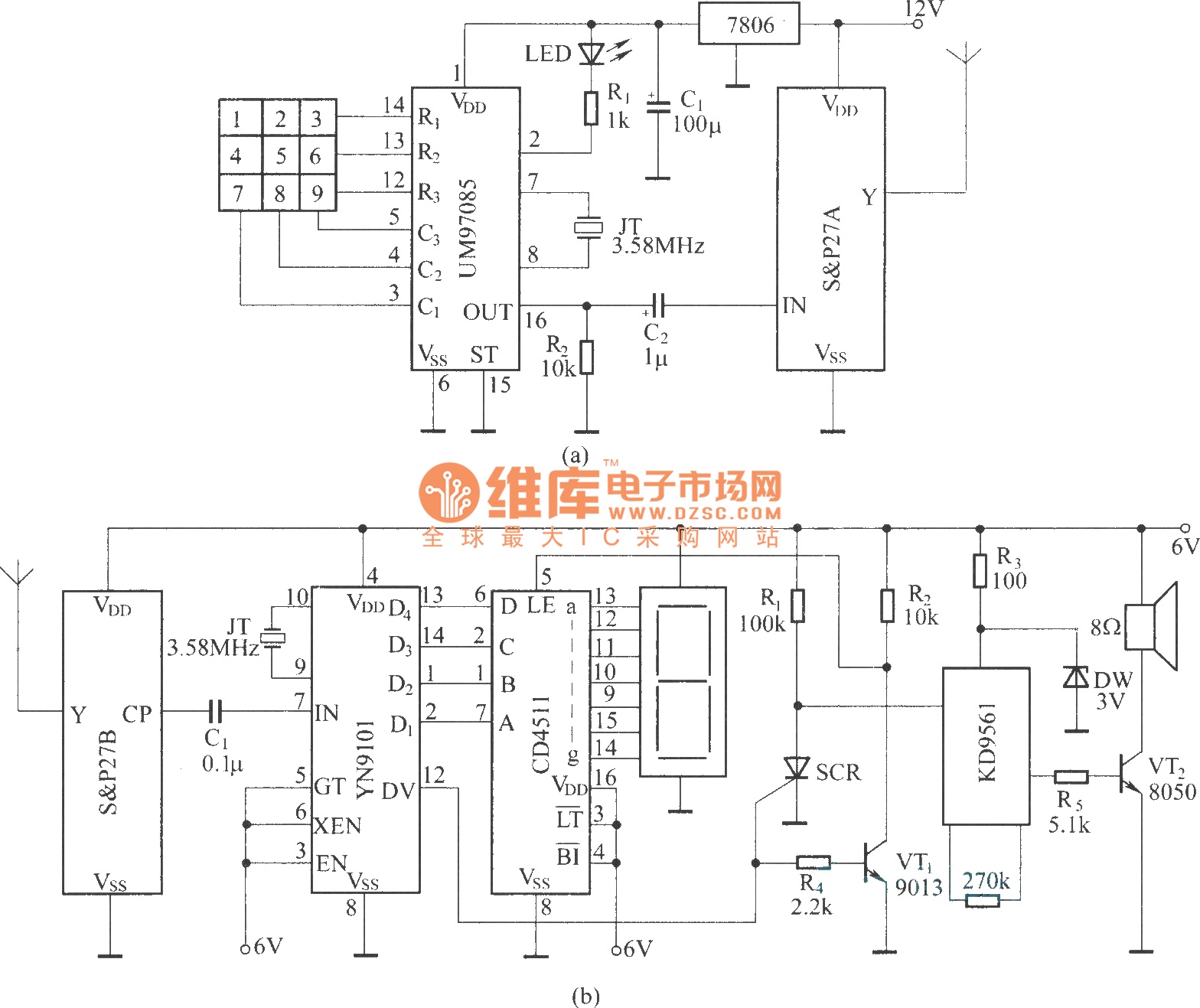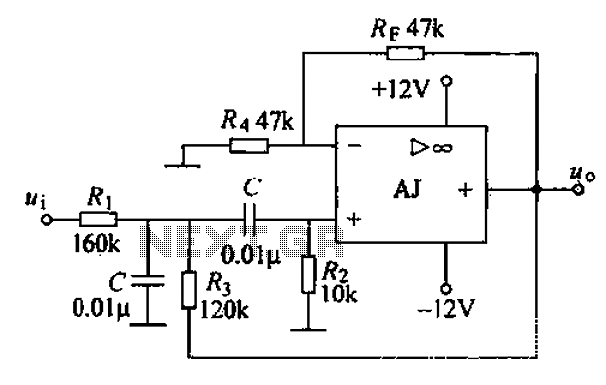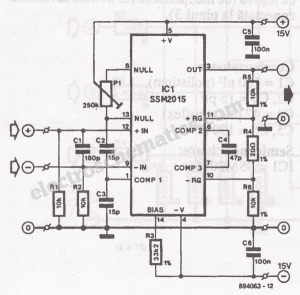
Heat Sensor Circuit

Two heat sensor circuits are presented. The first circuit is constructed using a 4060 integrated circuit (IC), while the second circuit is simpler and contains fewer components. This serves as a conceptual idea.
The first heat sensor circuit utilizing the 4060 IC is based on the principle of temperature detection through a thermistor or similar temperature-sensitive component. The 4060 IC functions as an oscillator, generating a frequency output that varies with temperature changes. The thermistor is connected to a resistor, forming a voltage divider that provides an input to the 4060. As the temperature increases or decreases, the resistance of the thermistor changes, thereby altering the voltage at the input of the IC. This change in voltage leads to a corresponding change in the frequency output, which can be monitored or used to trigger other components in the circuit, such as alarms or indicators.
The second heat sensor circuit is designed to be more straightforward, likely employing a basic transistor or operational amplifier configuration to sense temperature changes. This circuit may use a thermistor directly connected to a comparator circuit, where the output changes state based on a predefined temperature threshold. Fewer components in this design make it easier to assemble and potentially more cost-effective, though it may lack some of the advanced features provided by the 4060-based circuit.
Both circuits can be utilized in various applications, such as temperature monitoring systems, fire detection systems, and HVAC controls, showcasing the versatility of heat sensing technologies in electronic design.Here are 2 heat sensor circuits, first one is build with the 4060 IC, the second one is simpler than the one before and has fewer components. It is an idea.. 🔗 External reference
The first heat sensor circuit utilizing the 4060 IC is based on the principle of temperature detection through a thermistor or similar temperature-sensitive component. The 4060 IC functions as an oscillator, generating a frequency output that varies with temperature changes. The thermistor is connected to a resistor, forming a voltage divider that provides an input to the 4060. As the temperature increases or decreases, the resistance of the thermistor changes, thereby altering the voltage at the input of the IC. This change in voltage leads to a corresponding change in the frequency output, which can be monitored or used to trigger other components in the circuit, such as alarms or indicators.
The second heat sensor circuit is designed to be more straightforward, likely employing a basic transistor or operational amplifier configuration to sense temperature changes. This circuit may use a thermistor directly connected to a comparator circuit, where the output changes state based on a predefined temperature threshold. Fewer components in this design make it easier to assemble and potentially more cost-effective, though it may lack some of the advanced features provided by the 4060-based circuit.
Both circuits can be utilized in various applications, such as temperature monitoring systems, fire detection systems, and HVAC controls, showcasing the versatility of heat sensing technologies in electronic design.Here are 2 heat sensor circuits, first one is build with the 4060 IC, the second one is simpler than the one before and has fewer components. It is an idea.. 🔗 External reference





